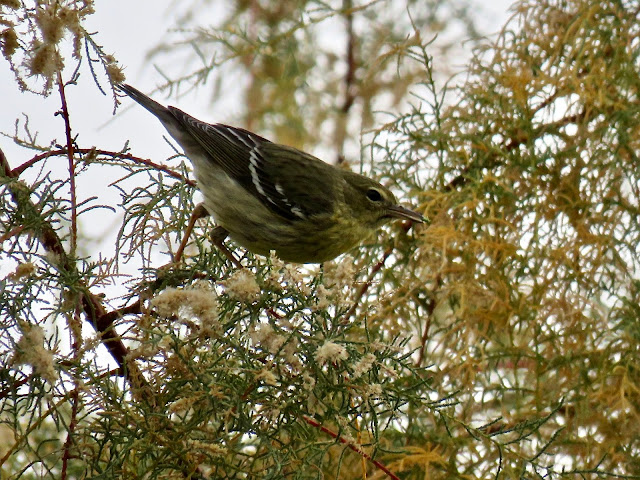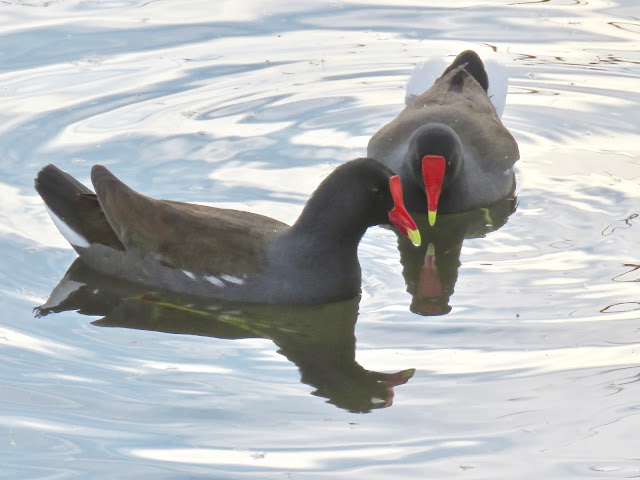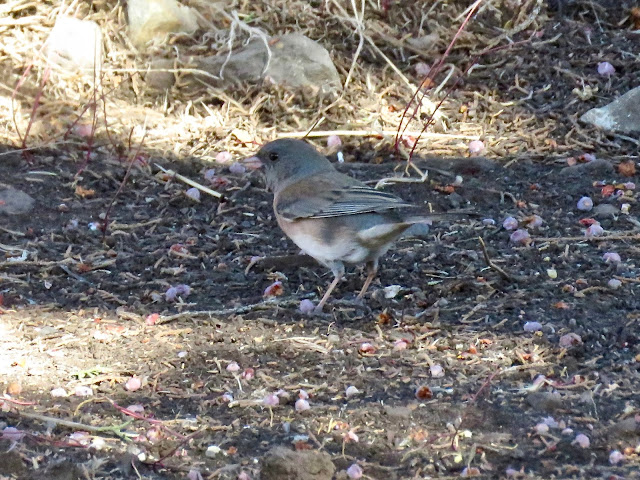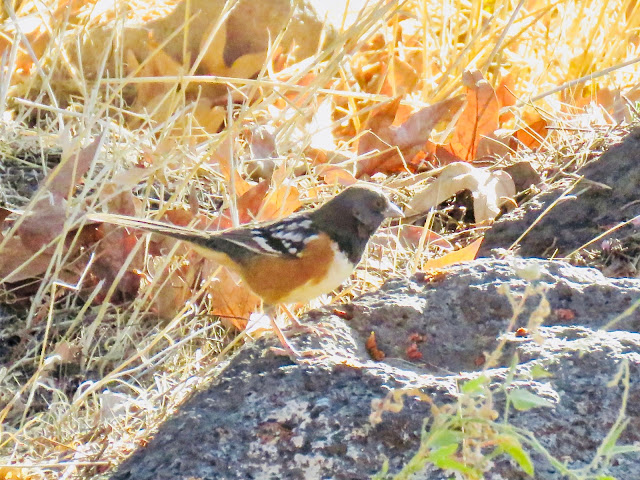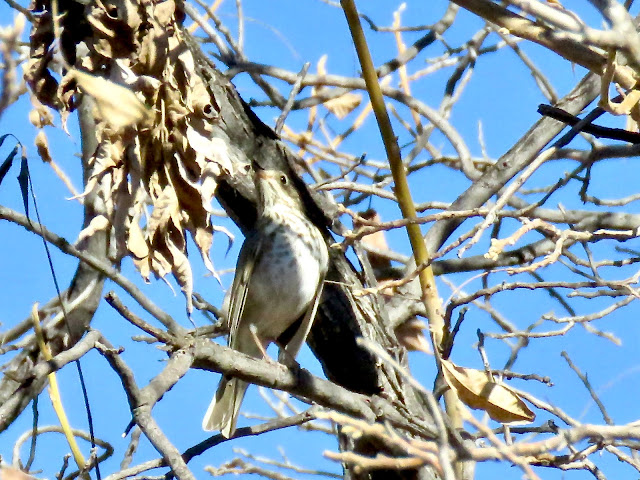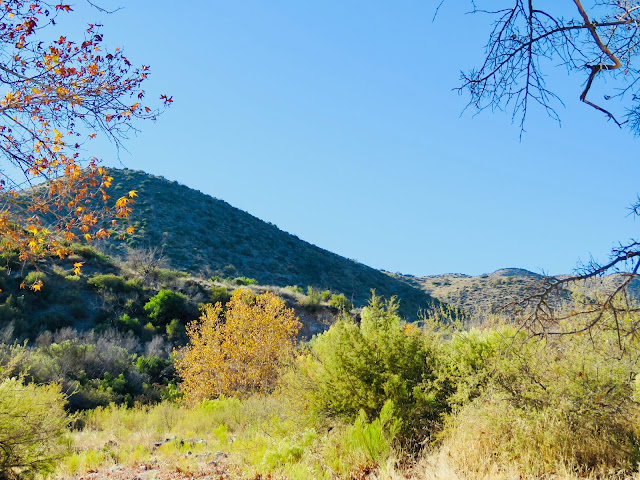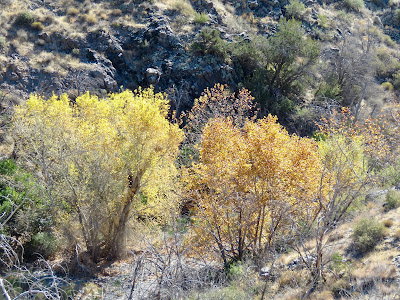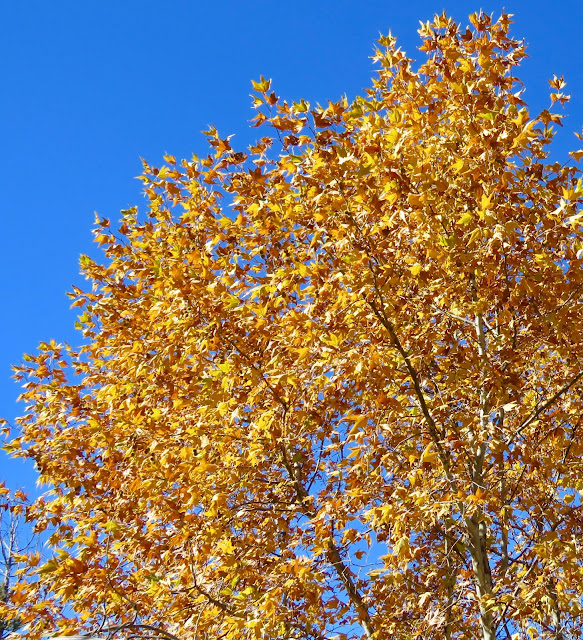When the "rare bird alert" (listserv) reported a reputable sighting of a BLACKPOLL WARBLER a little over 100 miles south at Sweetwater Wetlands, I was ready to jump in the car and go. I invited Hinde Silver to go with me. This I will do for a LIFE BIRD.
Even after a two-hour drive to this well-known birding spot in northern Tucson, the temperature was a daunting 49°F with overcast skies. Fortunately, the bird was found in the same area as previously noted and we got good views of this "eastern" species. Range maps show that it doesn't even enter Texas, let alone Arizona, so this was a wonderful opportunity to find a new bird. Photos of this BLACKPOLL WARBLER are below:
Knowing that another rarity had been found at Santa Cruz Flats, we exited I-10 at Red Rock on the way home to enter the Flats to see if we could find the ORCHARD ORIOLE in that eastern area known as Friendly Corners (on my map). Barely out of the car with binoculars up and looking into the pecan trees, we were glad to see another birder show up. Wind was picking up and Hinde and I were getting really cold. Daniel, on the other hand, wore shorts and had a more legitimate excuse for saying he was cold, too. He spotted our bird first and got the only photo as the first-year male ORCHARD ORIOLE foraged from one tree to the next. After seeing the bird well, Hinde and I headed back home. Another bird sighting within the Flats, unexpected but cherished, was a CRESTED CARACARA.
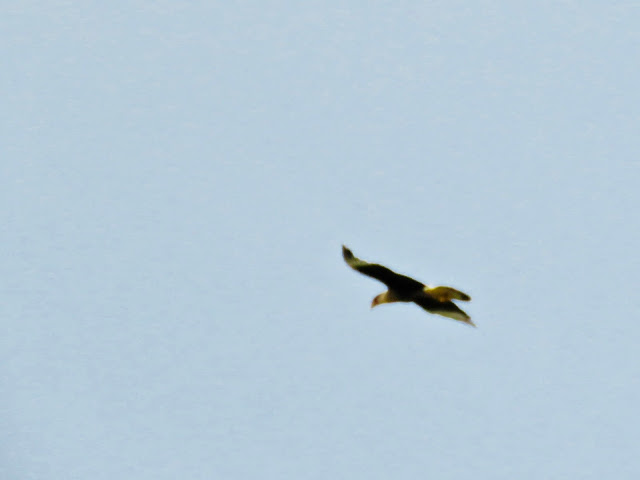 |
| CRESTED CARACARA |
December 18, 2017
On a bird outing with birding friends from the RV resort across from where I live, nine of us spent a little over two hours at Fountain Hills Lake. Best sighting were the many HOODED MERGANSERs. Every hour on the hour, the fountain in the lake erupts with a tall rocket of water able to be viewed from miles away. It went off three times while we birded the lake in a leisurely manner.
 |
| Drake and Hen HOODED MERGANSER |
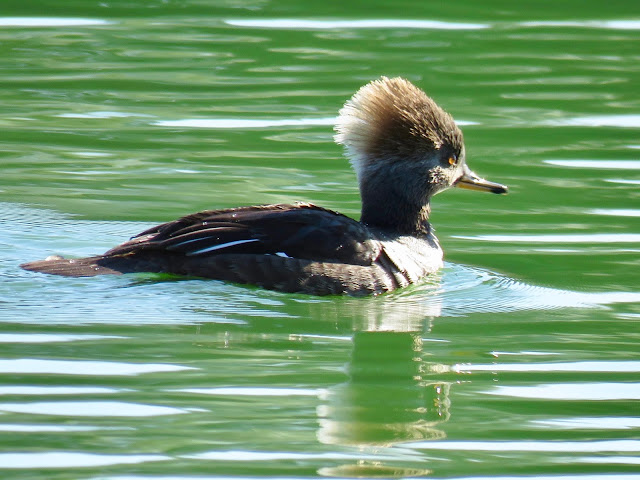 |
| Female |
 |
| Male with crest raised |
 |
| Male American Kestrel |
With Red Mountain in the background, this cormorant, perched with its wings out to dry caught my attention.
December 20, 2017
No! Not again! -- A rarity all the way south to Sweetwater Wetlands! Glenda Jones rode down with me this time and I had no agenda other than to find the ORANGE BISHOP (also known as Northern Red Bishop) that would be a LIFE BIRD for each of us. Of the Weaver family of birds, it is primarily an African bird but has been released and established at a few locations in the USA, including southern California, the Phoenix, AZ, area, and Texas.
Fortunately, I saw Rob Bowker when I entered the wetland trail and asked if he had yet seen the Bishop. It had been too dark earlier, so he returned to the reported spot while Glenda and I headed to it by walking the loop. As we came off the loop, Rob was running toward us motioning to catch up to him quickly. Without running (!), we managed to find the bird that Andrew Core had pointed out to Rob. What a gem! Really, a small buffy-colored bird, with a very short tail, it was not diffcult to find in the salt bush filled with White-crowned Sparrows (much bigger) and Mourning Doves (bigger yet).
 |
| ORANGE BISHOP with thick pink bill and short blunt tail. |
Trying to get a clear photo from our distance proved to be a bit of a problem but all that is required to prove a sighting is a photo that shows sufficient identification marks. These were good enough.
With no time constraints this time, Glenda and I birded much of the wetlands spotting 50 species altogether. A few of the other good birds:
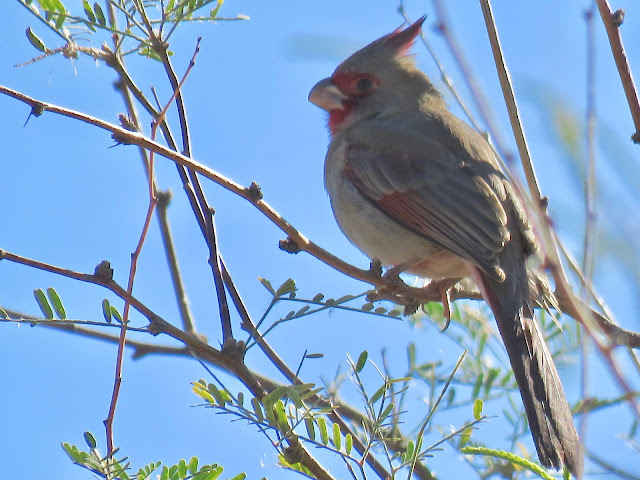 |
| PYRRHULOXIA- male |
 |
| PIED-BILLED GREBE |
December 22, 2017
Hinde Silver joined me to bird Base and Meridian Wildlife Area on this cold (40°F) morning. That's very cold to blood-thinned year-round residents of the desert. Our quest was to find another east-coast warbler that had found its way (or lost its way) to Arizona--a BLACK-THROATED GREEN. It moved too fast for photos between a willow and a cottonwood tree along the north stream of the Gila River, but I got quick good looks at the bird that I had gotten acquainted with in Pennsylvania in the spring.
We stayed and birded quite a while where the best action I was able to capture by photo was an OSPREY perched and eating a small prey when a GREAT BLUE HERON flew in for a piece of the action.
Not in the least intimidated, the OSPREY flew off to a single snag to finish off its snack.
December 23, 2017
The only Christmas Bird Count (CBC) I did this year was the one I've done for the past several years. Together Lois Lorenz, Hinde Silver and I collected a total of 48 species in the 4.5 hours we birded the Queen Valley community.
Our best sighting was among our first of the day: a SNOW GOOSE -- a juvenile. First noticed on the greens around the golf-course pond, the juvenile has the pink legs and pink bill with its black "grin line" along the lower mandible that the mature bird has, but it lacks all the white feathers of the adult.
 |
| Juvenile SNOW GOOSE with AMERICAN WIGEON |
 |
| SNOW GOOSE - Juvenile |
The action of the day went to an interloping SHARP-SHINNED HAWK that perched nicely on a low limb facing us. Our great view was interrupted by a diving HARRIS'S HAWK that drove the bird out of one tree to where it flew into the denser limbs of another. If you know Harris's Hawks, that is no problem for them. They work together, so this time a second Harris's Hawk helped the first, sending the Sharpie into the air again never to be seen by us again. Then the Harris's settled down commanding their territory.
 |
| HARRIS'S HAWK |
December 24, 2017
For many many years, I've chosen to go birding on my birthday and today was no exception. With light traffic (no commuters), I high-tailed it over to Glendale Recharge Ponds to see if I might find a CACKLING GOOSE among the many Canada Geese.
Parking outside of Pond #6, the geese were still on the water at 7:30 a.m. With scope focused on the large loose flock, I was able to pick out a RICHARSON'S CACKLING GOOSE (I think I saw four of them, but after a while the lines blur; it's smaller than a Canada but not as small as a Cackling Goose). Finally, I landed on the smaller one with similar marking as the Canada Goose but its breast area was dark, not as light as the Richardson's and not nearly as light as the Canada Goose. I had the CACKLING GOOSE with its rounder head, steeper forehead and stubby bill. But it was the short neck that caught my attention.
Fortunately, I got to see this bird in the water before all the geese started lifting off to go to their daytime haunts. Although it showed small in the overhead flock, I felt much better having had the good view through my spotting scope.
Of the 43 species I saw at Glendale Ponds, the AMERICAN WHITE PELICAN, at quite a distance, grabbed my camera's attention.
December 25, 2017
Lois Lorenz and I agreed to meet at the Riparian Wetlands at Gilbert Water Ranch on Christmas morning.
Beginning at 7:50 a.m. and birding for three hours, we spotted 59 species of birds. That place is amazing.
We also came upon Dara Vasquez, a fairly new but quite talented birder. I'll post a few photos from the day and attach the link to eBird for you to view the bounty of the place!
 |
| CANVASBACK - female |
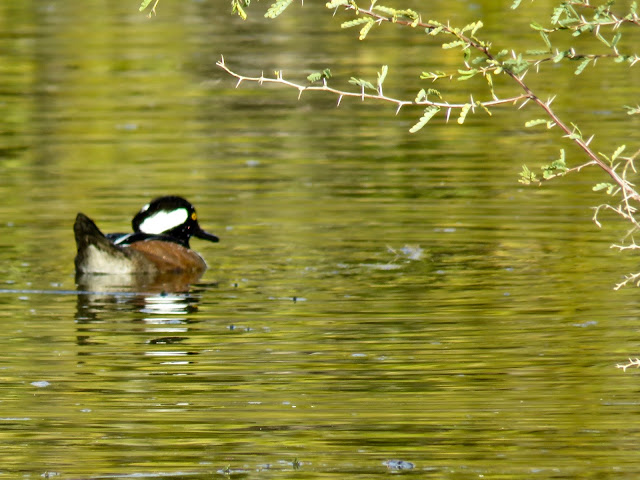 |
| HOODED MERGANSER with crest lowered (Pond #5)
View this checklist online at http://ebird.org/ebird/view/checklist/S41306628
|
Lois was game for stopping at Papago Park on the way home to check the ponds there for a reported Eurasian Wigeon but it was a no show. The COMMON GALLINULE stole the show for me.
 |
| GREEN HERON |
 |
| Families celebrating Christmas sunset at Hole in the Rock, Papago Park, Tempe, AZ |
December 27, 2017
Feeling rested and caught up with household chores, I headed out to Granite Reef Recreation Area along the Lower Salt River early this morning. It was another good day with 50 species in a little over two hours. Highlights below:
 |
| COMMON GOLDENEYE |
 |
| BUFFLEHEAD |
 |
| ROCK WREN almost at my feet. Seemed oblivous to my presence until it got to my hiking boots. |
 |
| GAMBEL'S QUAIL |
 |
| SONG SPARROW (Southwestern species - light reddish brown) |



